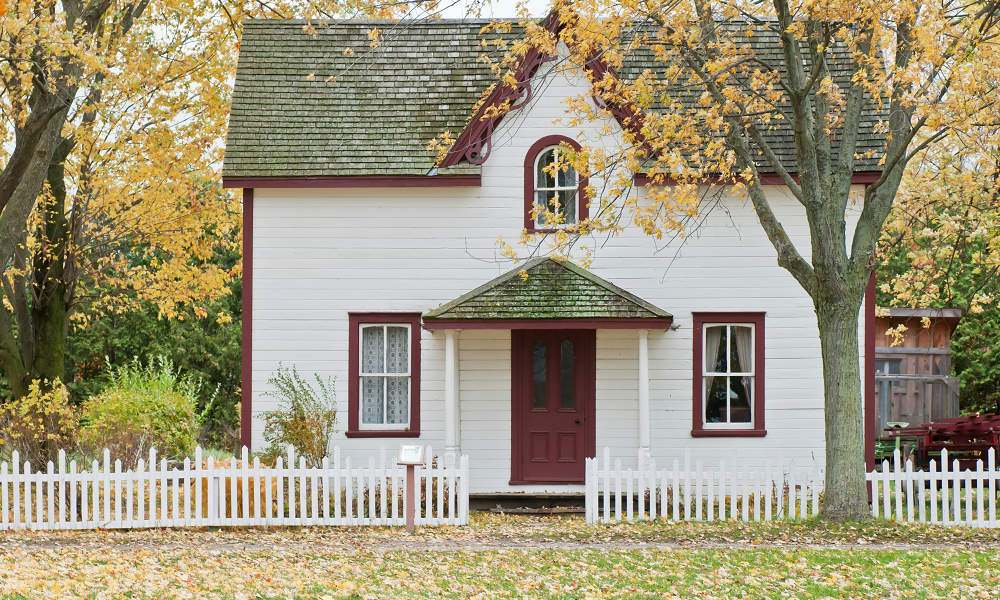Reviews
10 Key Tips for Creating a Practical Budget for Your Dream Home

Buying your dream house is an exciting milestone but comes with significant financial planning. Whether you’re looking for a cozy starter house or something more luxurious, budgeting is key to turning your vision into reality. Without a clear plan, unexpected costs can derail your goal.
This guide provides practical tips for creating a realistic budget and making informed decisions about your purchase. From setting goals to understanding costs, these steps will help you stay on track and achieve your dream without unnecessary stress.
- Define Your Dream Home Goals
The first step in budgeting is understanding what you want in a house. Consider factors such as the size, location, and features that matter most to you. Do you want a big yard, proximity to schools, or energy-efficient features? Listing your priorities will help narrow your options. By defining your goals early, you’ll be able to focus on properties that align with your vision and avoid wasting time on those that don’t. This clarity will guide your budgeting and help ensure your financial plan matches your expectations.
- Determine Your Affordability
Understanding your financial limits is crucial when planning to purchase a property. Evaluate your income, expenses, savings, and debts to determine how much you can comfortably allocate toward housing costs. This step ensures you stay within a realistic range, helping you avoid overextending your finances and maintaining long-term financial stability. Tools like the SoFi home loan affordability calculator make determining how much you can afford to spend on a house quicker and easier. This helps you set realistic expectations and prevents you from overextending your budget.
- Assess Your Current Financial Health
Before diving into the buying process, evaluating your financial situation is crucial. Start by reviewing your income, savings, expenses, and existing debts. Understanding where you stand financially will help you determine how much you can allocate toward a house. If you have high-interest debts or little savings, focus on improving your financial health first. Paying down debt and building savings not only strengthens your position but also improves your eligibility for better loan terms.
- Estimate the Total Cost of Ownership
Owning a house involves more than just the purchase price. Additional costs such as property taxes, homeowners’ insurance, maintenance, and utility bills can add up quickly. Researching these expenses ensures you’re prepared for the long-term costs of ownership. By factoring in these expenses early, you’ll have a clearer picture of what you can truly afford. This will prevent surprises down the road and help you create a comprehensive financial plan.
- Save for a Down Payment
A substantial down payment can significantly reduce your borrowing needs and lower your monthly payments. While some loans allow for smaller down payments, aiming for at least 20% can save you money on private mortgage insurance (PMI) and interest over time. To save for this, set aside a portion of your income each month, cut back on discretionary spending, and consider using windfalls like bonuses or tax refunds. Starting early makes reaching your savings goal more achievable.
- Explore Mortgage Options and Rates
Understanding the different types of mortgages is critical when budgeting for your purchase. Fixed-rate loans offer consistent monthly payments, while adjustable-rate mortgages (ARMs) have lower initial rates but can fluctuate over time. Researching the pros and cons of each will help you decide which one fits your financial situation and long-term plans. Interest rates also significantly impact the total cost of your loan. Compare rates from multiple lenders to find the most competitive options. A lower rate could save you thousands of dollars over the life of the loan, so don’t rush this step.
- Build an Emergency Fund
An emergency fund is an essential part of financial planning for any major purchase. Owning a house often comes with unexpected expenses, such as repairs or rising utility costs. Having a financial cushion ensures you can handle these costs without compromising your regular budget. Experts recommend saving at least three to six months’ worth of expenses in an emergency fund. Start small if necessary and add to it over time. Having this safety net will give you peace of mind and financial stability as you navigate homeownership.
- Differentiate Needs vs. Wants
It’s easy to get carried away with features when looking for your dream property. However, it’s important to distinguish between what you need and what you want. Essentials like enough bedrooms, a safe location, and a functional layout should take priority over luxury add-ons like a pool or high-end appliances. Creating a list of non-negotiable features versus optional ones can help you stay focused during your search. This approach ensures that your budget goes toward what matters most, keeping your financial goals on track.
- Plan for Long-Term Financial Goals
While budgeting for your property, consider how it fits into your broader financial plans. Factor in future expenses like retirement savings, children’s education, or travel aspirations. Ensuring your mortgage payments align with your long-term goals helps maintain financial balance and prevents your property purchase from limiting other important life priorities.
- Review and Adjust Your Budget Regularly
Creating a budget is just the first step; maintaining it requires regular reviews and adjustments. Revisiting your budget as your financial situation changes or unexpected expenses arise ensures you stay on track toward your goal. Set a schedule to review your savings progress and expenses, making adjustments as needed. Staying proactive helps you avoid setbacks and keeps your dream of homeownership within reach.
Budgeting for your dream house requires careful planning and consistent effort, but it’s a rewarding process that brings you closer to achieving your goals. By defining your priorities, using tools like a home loan affordability calculator, and exploring assistance programs, you can create a practical plan that works for your financial situation.
Staying disciplined and flexible ensures you’re prepared for both the purchase and the long-term costs of ownership. With the right approach, you’ll be ready to turn your dream into reality and enjoy the many benefits of having a place to call your own. Start today, and take the first steps toward a future that aligns with your aspirations and financial well-being.

-

 World1 week ago
World1 week agoEthiopian volcano erupts for first time in thousands of years
-

 Health2 days ago
Health2 days ago8 kittens die of H5N1 bird flu in the Netherlands
-

 Legal7 days ago
Legal7 days agoUtah Amber Alert: Jessika Francisco abducted by sex offender in Ogden
-

 US News6 days ago
US News6 days agoExplosion destroys home in Oakland, Maine; at least 1 injured
-

 Health7 days ago
Health7 days agoMexico’s September human bird flu case confirmed as H5N2
-

 Legal3 days ago
Legal3 days ago15 people shot, 4 killed, at birthday party in Stockton, California
-

 World7 days ago
World7 days agoWoman killed, man seriously injured in shark attack on Australia’s NSW coast
-

 Health6 days ago
Health6 days agoMarburg outbreak in Ethiopia rises to 12 cases and 8 deaths




